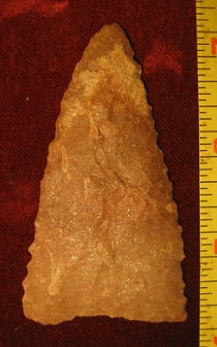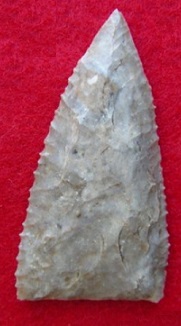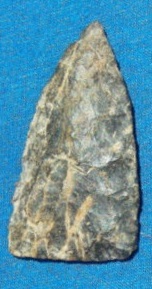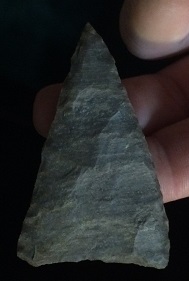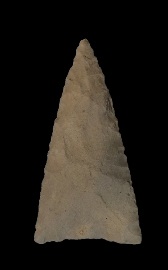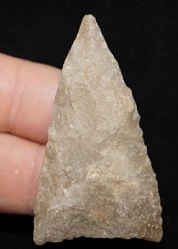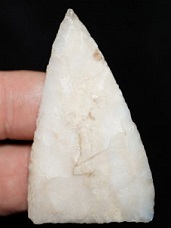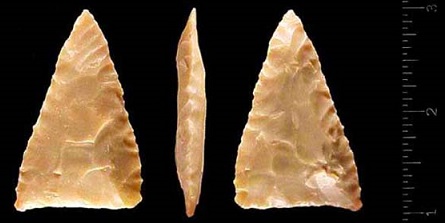Outline is Representative of Size and Shape:
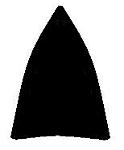
Name Details:
Identified By: Thomas H. Hester
Named For:
Date Identified: 1971
Type Site:
Identified By: Thomas H. Hester
Named For:
Date Identified: 1971
Type Site:
Point Validity:
Valid type
Hester is a well-respected anthropologist and a Professor Emeritus at the University of Texas – Austin. Hester has conducted extensive studies in archaeology of Texas. This type was named in a professional publication and has many professional references. This is considered a valid type.
Early Triangular
Cluster: Description of Physical Characteristics and Flaking Pattern:
This is a medium to large triangular point with an elliptical cross section. The blade may vary from excurvate to straight. The blade is commonly beveled on alternating edges and serrated. The base is straight to concave. The base is thinned and may range from being fluted or having long narrow flakes extending from the base. This point has a parallel oblique flaking pattern.
Size Measurements:
Total Length - 40 to 90 mm (average 50 to 65 mm), Basal Width - 25 to 40 mm (average 28 to 34 mm)
Total Length - 40 to 90 mm (average 50 to 65 mm), Basal Width - 25 to 40 mm (average 28 to 34 mm)
Commonly Utilized Material:
Additional Comments:
Bousman and Vierra (2012) discuss a period of time which has been identified by Solberger and Hester in 1972 as a "Pre-Archaic" period. This period represent the end of the Transitional Paleo tradition, but is before the Early Archaic tradition. Bousman and Vierra include this type as identifying markers for the Pre-Archaic period. However, most literature places this type in the Early Archaic period.
McGraw (1984) theorizes that these were used as knives with the shape varying based on the stage of use (Turner and Hester, 1985).
Bousman and Vierra (2012) discuss a period of time which has been identified by Solberger and Hester in 1972 as a "Pre-Archaic" period. This period represent the end of the Transitional Paleo tradition, but is before the Early Archaic tradition. Bousman and Vierra include this type as identifying markers for the Pre-Archaic period. However, most literature places this type in the Early Archaic period.
McGraw (1984) theorizes that these were used as knives with the shape varying based on the stage of use (Turner and Hester, 1985).
Distribution: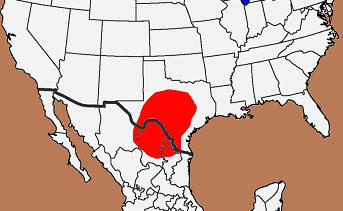

Distribution Comments:
This point is primarily found in the Pecos region and into southern and central Texas. This point may be found into southern Oklahoma with decreased frequency.
This point is primarily found in the Pecos region and into southern and central Texas. This point may be found into southern Oklahoma with decreased frequency.
Age / Periods:
Date: 9,000 - 8,000 B.P.
Cultural Period: Transitional Paleo to Early
Archaic
Glacial Period: Early Holocene
Culture:
Date: 9,000 - 8,000 B.P.
Cultural Period: Transitional Paleo to Early
Archaic
Glacial Period: Early Holocene
Culture:
Age Details:

